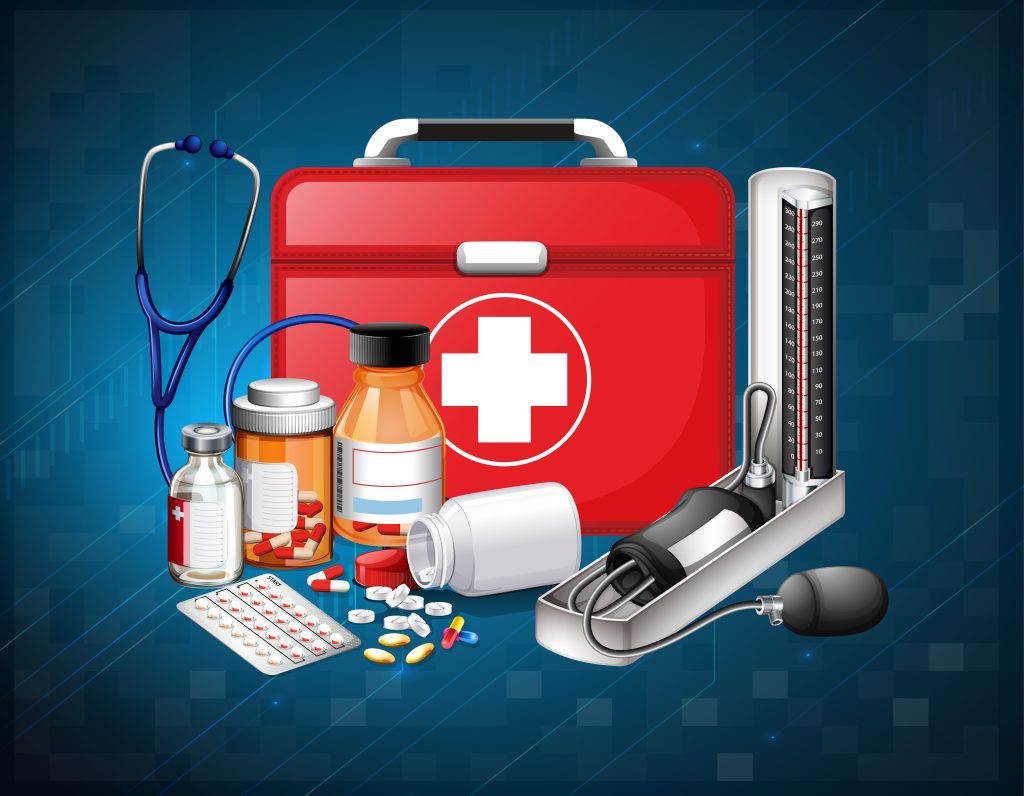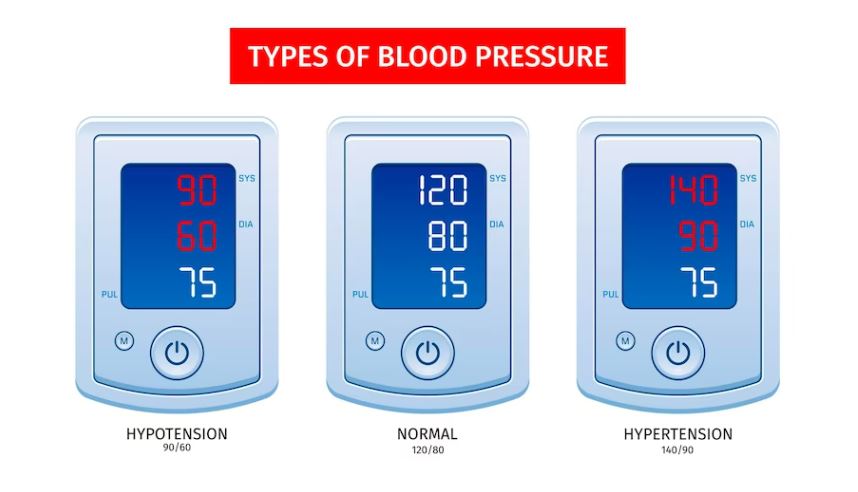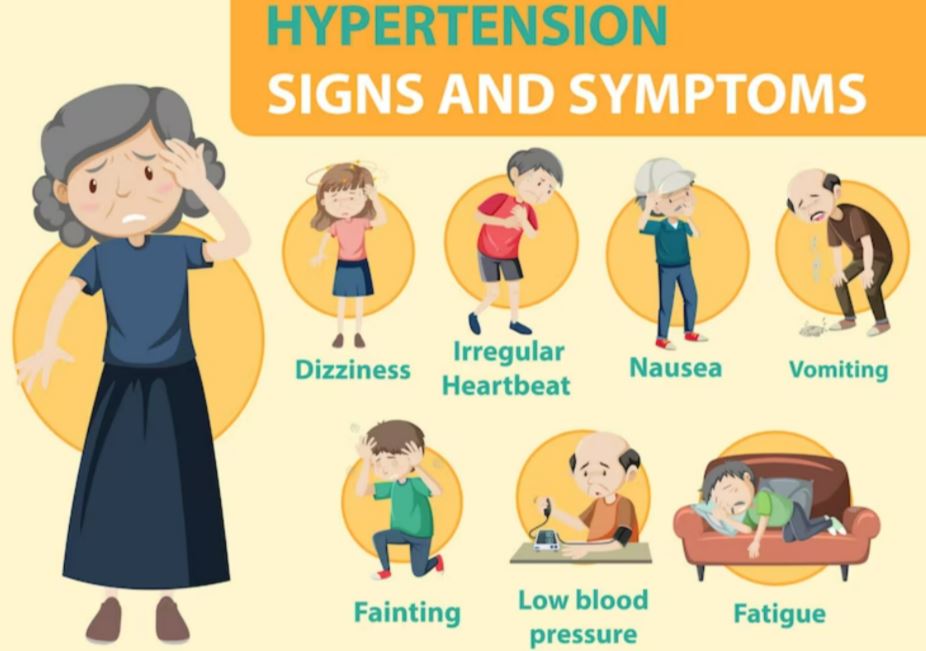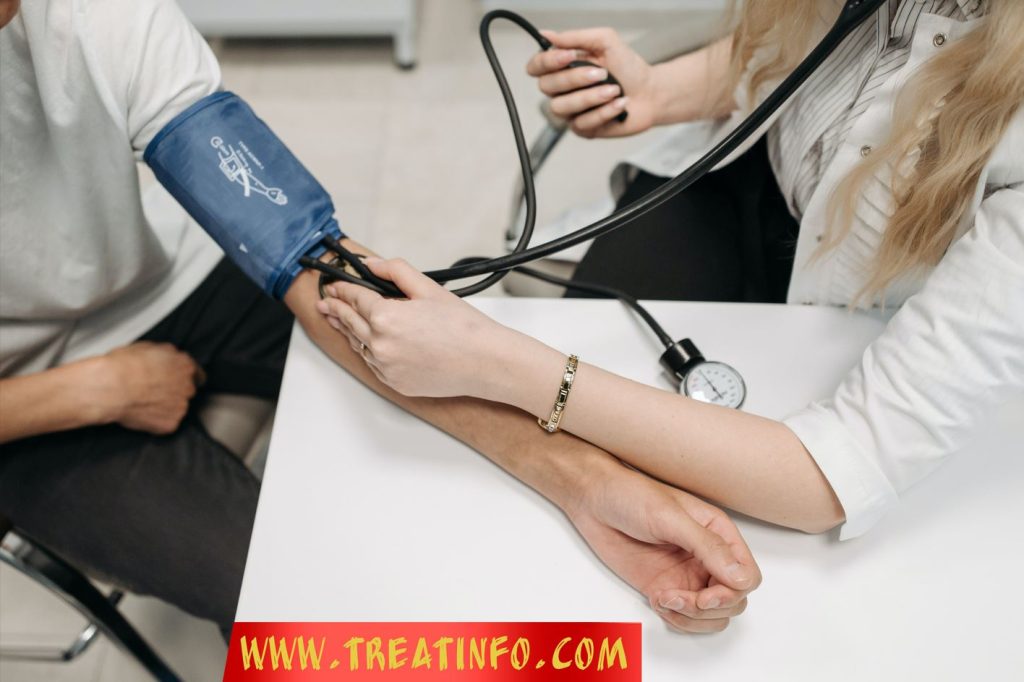Hypertension is the high blood pressure of blood in the body that affects the arteries of the body. Hypertension pushes the blood against the arteries wall with high force and as a result, the work of the heart increases.

The scale for blood pressure measurement is in mm of mercury. The reading of BP is 130/80 mm Hg or higher. High blood pressure is a silent killer. Silent killer damages the internal body without causing any awareness to the individual.
There are 2 numbers in the measurement of blood pressure. The high number is systolic blood pressure. The lower number in measurement is diastolic blood pressure.
Systolic pressure means pressure on the vascular wall during the contraction of the heart. Diastolic pressure means pressure on the vascular wall during the relaxation of the heart.
For example, a blood pressure of 110/70 is a normal range of blood pressure. In this, the 110 is systolic blood pressure. The 70 pressure is diastolic blood pressure. The blood pressure above this normal range is hypertension.
Every adult should check blood pressure at least 2 times per year. Some people need frequent checks. Lifestyle changes can help to control high blood pressure. Medicine can treat high blood pressure in some people.
1. Hypertension pathophysiology
The pathophysiology of hypertension is very complex and multifactorial. The kidney is the main contributing organ to hypertension. It is also the most effective organ for hypertension. Genetics, activation of the neurohormonal system and high salt intake are contributing factors. Cardiac output and total peripheral vascular resistance increase during hypertension. Obesity is also the main factor in the elevation of blood pressure.
2. Classification of hypertension
There are 2 main classifications of hypertension.
· Primary hypertension
It is high blood pressure due to common causes like advanced age and unhealthy habits. The unhealthy habits include poor diet and not getting proper exercise.
· Secondary hypertension
This high blood pressure is due to underlying medical conditions like hormonal problems or kidney problems. Medicines that treat the underlying condition can cause secondary hypertension.
There are the following levels of blood pressure that decide the stage of hypertension
· Normal blood pressure
The normal blood pressure ranges from 120/80 mm Hg or lower.

· High blood pressure
The systolic blood pressure ranges from 120-129 mm Hg. The diastolic blood pressure lies below 80 mm Hg.
· Hypertension stage 1
Stage 1 hypertension top blood pressure lies from 130 to 139 mm Hg. Its lower blood pressure is from 80 to 89 mm Hg.
· Hypertension stage 2
This blood pressure varies from 140 mm Hg to 90 mm Hg. The systolic blood pressure is above 140 mm Hg. The diastolic blood pressure lies below 90 mm Hg.
Emergency hypertension has blood pressure above 180/120 mm Hg. This emergency hypertension needs medical attention. Hypertension increases the chances of heart attack, stroke, and other medical problems.
3. Hypertension in pregnancy
Hypertension can occur during pregnancy. It can cause complications in 10% of pregnant women. Blood pressure in pregnancy can range from mild to serious stages.
There are the following stages of blood pressure during pregnancy
· Chronic hypertension
This hypertension is present before pregnancy.
· Gestational hypertension
This hypertension occurs during the pregnancy trimester.
· Preeclampsia
This hypertension occurs during the latter half of pregnancy. It is a dangerous condition and can cause swelling in pregnant women and loss of protein through urine which can lead to seizures by affecting other parts of the body.
· Chronic hypertension with superimposed preeclampsia
The female with chronic hypertension has a higher chance of developing preeclampsia.
Females should check blood pressure during pregnancy after regular intervals.
4. Symptoms of hypertension
Hypertension does not cause any symptoms and it is a silent killer. A regular checkup can diagnose its presence. Any changes from the normal range in blood pressure can reveal it. It shows its presence only at its dangerous level.

There are the following symptoms present in some people during hypertension
- Headache
- Nose bleeds during hypertension
- Breath shortness
These symptoms are not present in all people with hypertension. It can show itself at its life-threatening stage.
5. Causes of hypertension
Hypertension has different causes according to its types. Primary hypertension may occur due to advanced age and an unhealthy lifestyle.
There are the following reasons behind secondary hypertension
- Tumors of the adrenal gland
- Congenital heart defects
- Insomnia
- Kidney disease
- Thyroid problems
- Cough and fever medicines
- Pain relievers
- Birth control pills
- Other prescription medicines
- Cocaine
- Amphetamines
A healthy checkup can raise blood pressure and this rise in blood pressure is white-coat hypertension.
6. Diagnosis for the cause of hypertension
Hypertension cannot show any symptoms. The health care provider can check the level of blood pressure. There are the following tests that can diagnose high blood pressure
· Ambulatory monitors
Ambulatory blood pressure monitoring means checking B.P at regular intervals over 6 or 24 hours. This test is available only at medical centres.
· Lab tests
These tests include blood and urine test to find the cause of blood pressure. It also involves checking cholesterol and blood sugar level. The doctor can also check the function of the kidney, liver and thyroid.
· ECG
This measures the heart’s electrical activity. This is a quick and painless test. This test can show the beating of the heart. The healthcare provider places electrodes on the chest, arm or legs. These sensors attach to the machine to display the heart’s activity.
· Echocardiogram
This test can show detailed images of the beating of the heart. This non-invasive procedure use sound waves for this purpose. It also shows the movement of the heart and heart valves.
· Blood pressure at home
The doctor asks the patient to check B.P at regular intervals and for that purpose home monitoring is very helpful to track blood pressure. This monitoring also tells about the working of recommended medicine.
These monitors are available at stores and pharmacies. Only monitors with a cuff that goes around the upper arm are accurate.
There is no recommendation for wrist or finger devices to measure B.P. Their result is not reliable.
7. Treatments for hypertension
There are the following treatments to control high blood pressure.
· Home remedies and lifestyle changes
There are the following home remedies and lifestyle changes to control hypertension
- Use regular monitors to measure blood pressure at home. Now, electronic monitors are also available.
- Cut down diet to low salt and fat. The recommended dose of salt is 1500mg per day for a person.
- Eat healthy foods
- Maintain healthy body weight
- Stop drinking alcohol. Alcoholic users should not drink alcohol more than 2 drinks per day. The recommendation of 2 drinks man and 1 drink for women. 2 drinks contain 1 ounce of alcohol, 5 ounces of wine, or 12 ounces of beer.
- Stay active by doing regular exercises.
- Stop smoking or using tobacco products.
- Manages stress by lowering overload.
- Eat fresh vegetables, fruits, whole-grain rice, and pasta.
- Lowering salt quantity by using natural flavours, spices and herbs
- Avoid eating processed foods, salted snakes, and fatty meats.
- Try to sleep at least 8 hours.
· Medication for hypertension

The 1st line treatment for high blood pressure has four classes of medicines. The doctor advises a combination of 1st line medicines with other medications. This combination is better for controlling hypertension.
1st line medicines for hypertension are as
· Angiotensin-converting enzyme (ACE) inhibitors
Enalapril, captopril, and lisinopril are ACE inhibitors.
· Angiotensin II receptors blockers (ARBs)
Metoprolol, and valsartan are ARBs.
· Calcium channel blockers
Amlodipine, diltiazem, and nifedipine are calcium channel blockers.
· Diuretics
These are available in fluid or water pills. Indapamide, hydrochlorothiazide and chlorothiazides are diuretics.
The recommendation of a doctor in all cases is necessary. Some medicines should avoid during pregnancy. These are hypertension guidelines.
· Hypertension exercise
Regular exercise makes the body healthy. Exercise lowers blood pressure, stress, and the risk of health problems. Hypertension exercise includes moderate aerobic activities for at least 150 minutes per week.
The vigorous aerobic activity needs 75 minutes per week. The combination of both exercises is also helpful. Consistent moderate to high-intensity workouts reduce top pressure by 11 mm Hg. This workout can lower bottom blood pressure by 5 mm Hg.

